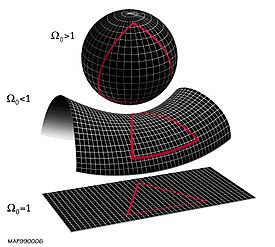pink-cheetah
Active member
A prokaryotic cell is a cell that has no distinct, membrane bounded organelle.
Sort-of. But the reason they need more mass is because galaxies aren't following the rules of gravitation. The outer parts of the galaxies should be moving slower than the inner parts, according to the rules...but they aren't. So, either the rules (equations) are wrong – or there's more matter (or something) out there, that is moving slower, as it nears the (real) edge of the galaxy. And of course, if there is a whole bunch more matter that we can't see, it is possible that there is enough more matter to make the universe flat.Olorin said:Scientists are loking for dark matter because they want to find a solution for all the mass in the universe which they can't find, right?

In a flat universe, all of the local curvature and local geometry is flat. In general it can be described by Euclidean space, however there are some spatial geometries which are flat and bounded in one or more directions. These include, in two dimensions, the cylinder and the torus. Similar spaces in three dimensions also exist.
